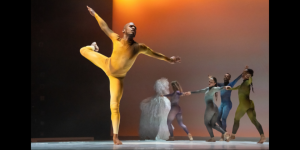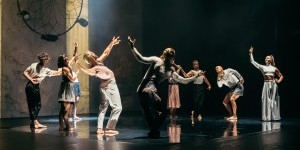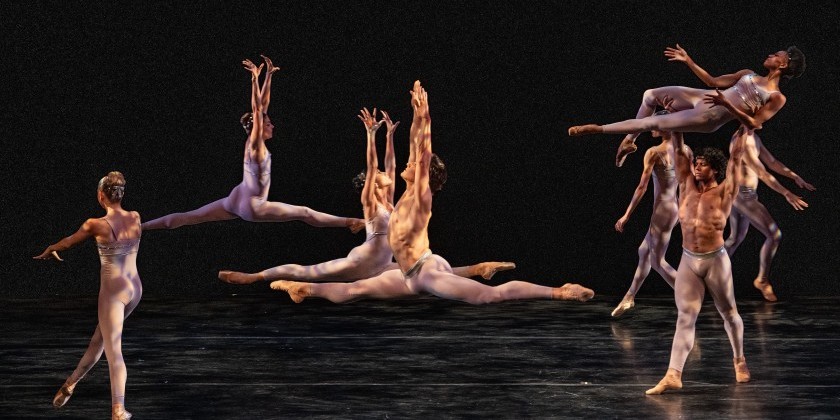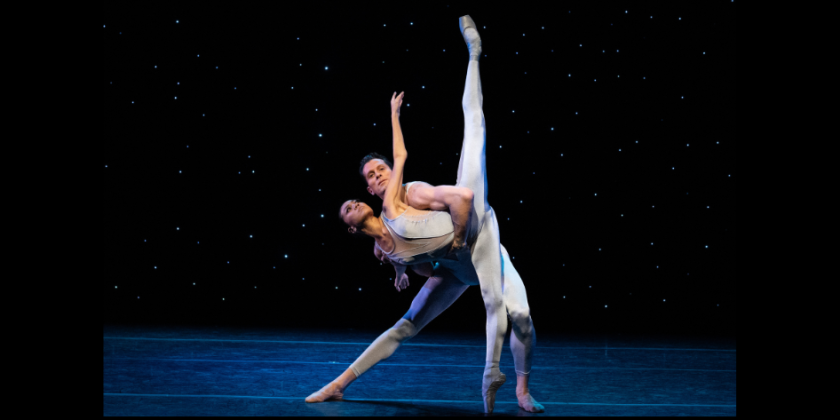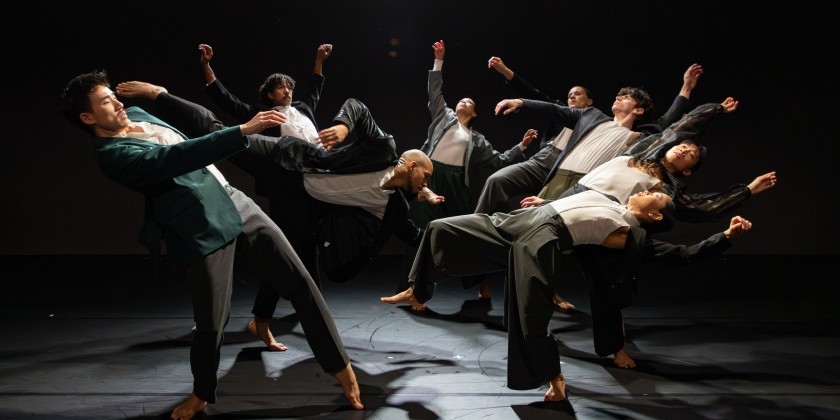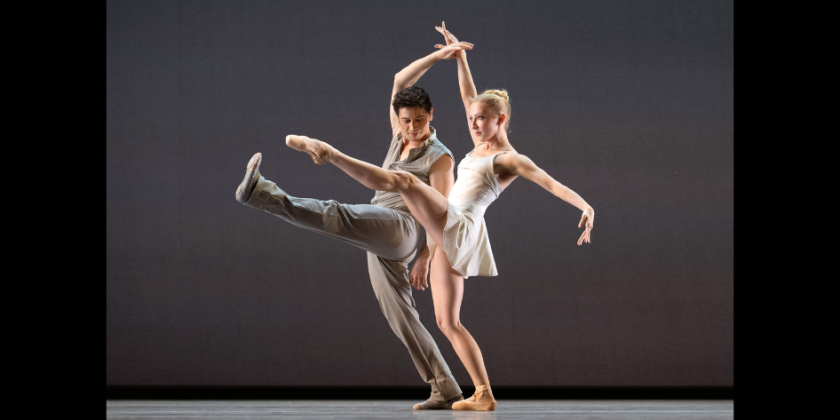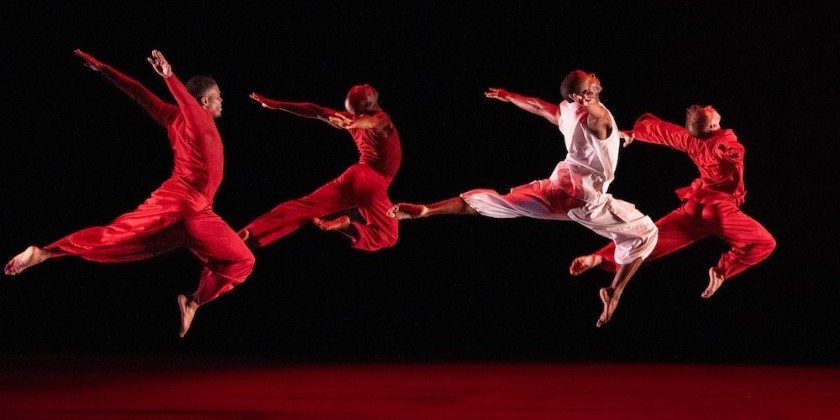IMPRESSIONS: Tango Tales of Two Cities — "Noestango" in Buenos Aires and "Tango After Dark" in New York City
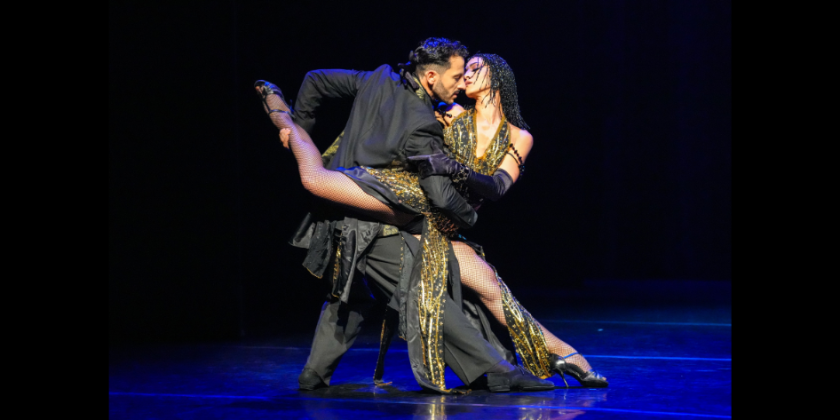
WHAT: Noestango
WHERE: Teatro Metropolitan, Buenos Aires
WHO: Dancers: Manuco Firmani, Nicolás Minoliti, Ulises Garca, Milagros Rolandelli, Marcela Vespasiano | Musicians: Emiliano Greco (piano & musical direction), Matías Grande (violin), Lautaro Greco (bandoneon), Matías Tozzola (guitar), Manuel Gómez (double bass) | Creation and choreography: Grupo noestango (Lisandro Eberle, Ollantay Rojas, Milagros Rolandelli) | Direction: Ollantay Rojas
WHAT: Tango After Dark
WHERE: The Joyce Theater, New York City
WHO: Dancers: Germán Cornejo & Gisela Galeassi, Nicolás Schell & Nair Schinca, Esteban Simón & Marilu Leopardi, Gonzalo Bogado & Jimena Toñanez, Lisandro Eberle & Noelia Pizzo | Musicians: Antonela Cirillo (vocals), Tomás Falasca (double bass), Diego Ramos (piano & musical direction), Matías Rubino (bandoneon), Gemma Scalia (violin), Jerónimo Izarrualde (drums) | Director & Choreographer: Germán Cornejo (choreography in collaboration with the dancers)
Tango reflects the joy and pain of life and celebrates its imperfections. Seeing numerous traditional tango shows in Buenos Aires in January and February has prompted me to contemplate the form’s future.
Noestango, under the direction of Ollantay Rojas, enchants me with its contemporary take, and its focus on tango’s essential elements. The troupe performed on Wednesdays, in February, at the Teatro Metropolitan in the heart of Avenida Corrientes, Buenos Aires’ answer to Times Square.
The bright red curtain lifts on five dancers walking among five musicians and their instruments, which include a grand piano, placed centerstage. Three lamps hang from the ceiling, yet initially only the central one is lit. It glares harshly. The dancers move busily to equally harsh and syncopated sounds. What immediately comes to mind is a street scene in this city, one of the biggest metropolitan areas in the Americas. (According to my sources it is at number 4, right behind New York.)
.jpeg)
Noestango. Photo: Gabriela Ferreira
The dancers find chairs to sit in, at either side of the stage. Are they on a bus or subway on their way to work? Imperceptibly the lighting warms as the music turns less aggressive and even takes on a romantic lilt. Astor Piazzolla’s composition that just pierced one’s ears now caresses one’s soul as it conjures up memories. Despite its everlasting familiarity, it never grows stale thanks to its abridged, witty phrasing. Although tempo and volume eventually pick up again, the dancers pensively wait on the sidelines. Violin and guitar interact, and the bandoneón player demonstratively raises his instrument by resting his leg on a foot stool. Only then does one of the dancers start running around the musicians, as if late for an appointment. The men chase after her one by one, before the other woman joins them. The dancers reclaim the space, and amid the commotion the piano gets moved to the upstage left corner, as the rest of the instrumentalists settle around it.

Noestango. Photo: Gabriela Ferreira
By now, the three lamps illuminate the stage space in which the dancers practice preparatory steps. They sport casual outfits. The men’s shirts in different colors and styles - one brown box cut, one green polo, and a blue turtleneck — not only help distinguish the individuals, but also unify the ensemble, because they are all short-sleeved. The ladies’ workout gear lets them move freely while not distorting the bodyline. Lightweight black sneakers with white soles signify a departure from the footwear of the traditional presentations I have been seeing in the dance halls of San Telmo. It begins to dawn on me that the show’s title suggests that this ain’t tango. Just at this moment, however, one of the dancers (with a handheld device) projects a black-and-white silent film of a tango dance hall on one side of the space, as if to remind everyone that this treasure needs to be reawakened. The moving images make one want to travel back in time to Buenos Aires, before the city’s high society adopted the formerly low-class tango, and refined it in its elegant dance palaces starting around 1910.
.jpg)
Inspired by the film reel, two couples start dancing. As soon as their unison movements become exciting, the couples add individual flourishes. The other man comes in, and partners change. The group moves across and around the space as a quintet. It splits up into a trio and a male couple, until the ever-changing and unpredictable action becomes momentarily stuck. Dancing partners lean against each other like falling pillars suspended only by their mutual support, and two couples form separate vertical triangles. The dancers labor to continue to support one another until — joined by the fifth member of the group — they come together in a morphing huddle that Anna Halprin would be proud of. Contact improvisation turns out to be a natural partner for tango’s entanglements. As the group dissolves, two men left standing embrace one another.

Milagros Rolandelli picks the man in blue, Manuco Firmani, and leads him to walk and move around her. She is the center of attention and takes charge. She places his arms and hands moving him to whichever side of her she wants him to be on. Within this playful circular theme, she arches her back in delight, as he begins to spin her on one leg and tries to keep up. Her appetite whetted, she moves on to Ulises García (in brown) and shows him how to hold and spin her, before Nicolás Minoliti (in green) gets his chance to turn her. The three men take Rolandelli on a roller coaster of emotion by keeping her in rotation. At first, this game elicits her giggles, which eventually evolve into ecstatic laughter, then sobbing, and - after a long and satisfying merry-go-round — into a blissful trance. I feel just dirty enough — but thankfully not guilty to perceive in this spinning a metaphor for orgasm that is life.
New situations follow in a string of vignettes that give insight into how deeply tango is interwoven into the Argentinian psyche. In one section, a dancer acts as the choreographer placing the others in various spots on stage and showing brief step combinations, while the dancers try to pick up what he wants and tentatively fill in the gaps. In another vignette, Marcela Vespasiano takes on one dancer after another, and with seemingly improvised tango steps wrestles each one to the ground. Tango spells interpersonal war, and one knows how to relish both domination and submission.

After a break in the dancing, in which the fabulous musicians let me process the many intricacies of this fantastically original presentation, which engages me physically, emotionally, and even spiritually, the dancers reprise some of the themes at varying speeds. It is as if they are flying across the space. They dip, they slide, they soar, they fall, they connect, and support, and propel one another in new and exciting formations. In the end, they disconnect, and Rolandelli stands alone in a pool of light. Is the sun in the center of Argentina’s flag surrounded by darkness?
Co-choreographed by director Rojas, cast member Rolandelli, and Lisandro Eberle, Noestango allows enough freedom for improvisation to keep these dancers fully engaged with one another and committed to an intense discourse with the movement material throughout the 75-minute presentation. The show is a revelation, and transports the art of tango into the new millennium suggesting a bright future.
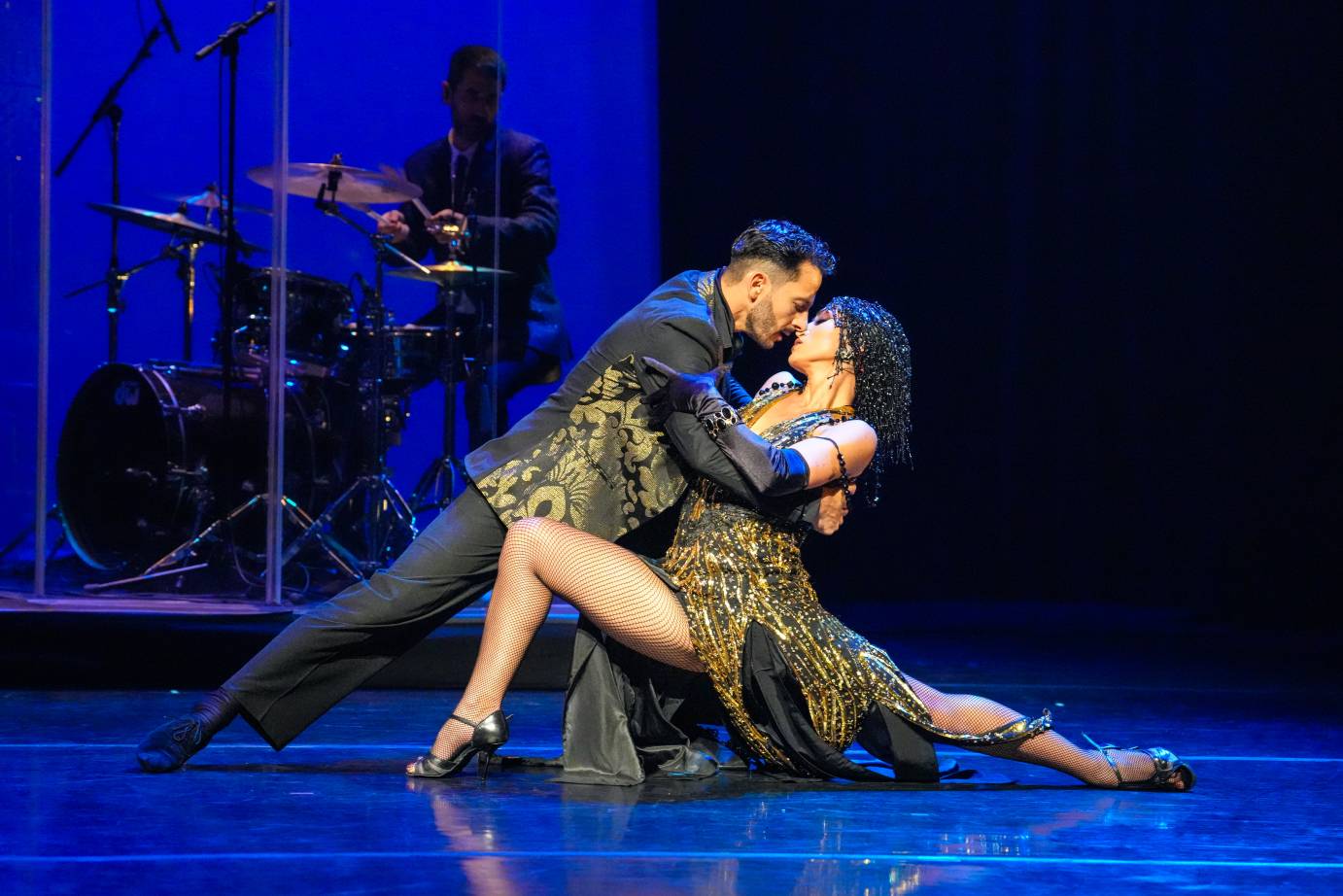
Eberle also appears in Germán Cornejo’s Tango After Dark at New York City’s Joyce Theater, where he dances a wonderfully moody pas de deux with Noelia Pizzo, not long before the show’s intermission. These two artists make me hopeful that in the second half the rest of the cast will also aim for an emotional connection, after what has been an ever-impressive acrobatic display. Here is a show that has all the trappings. A six-member band features a buxom vocalist who doubles as an occasional narrator. Elaborate costumes change from one supposedly show-stopping number to the next; and sometimes the dancers wear wigs so that one believes one is seeing different dancers than the ones who appeared in the previous numbers. No expense is spared.
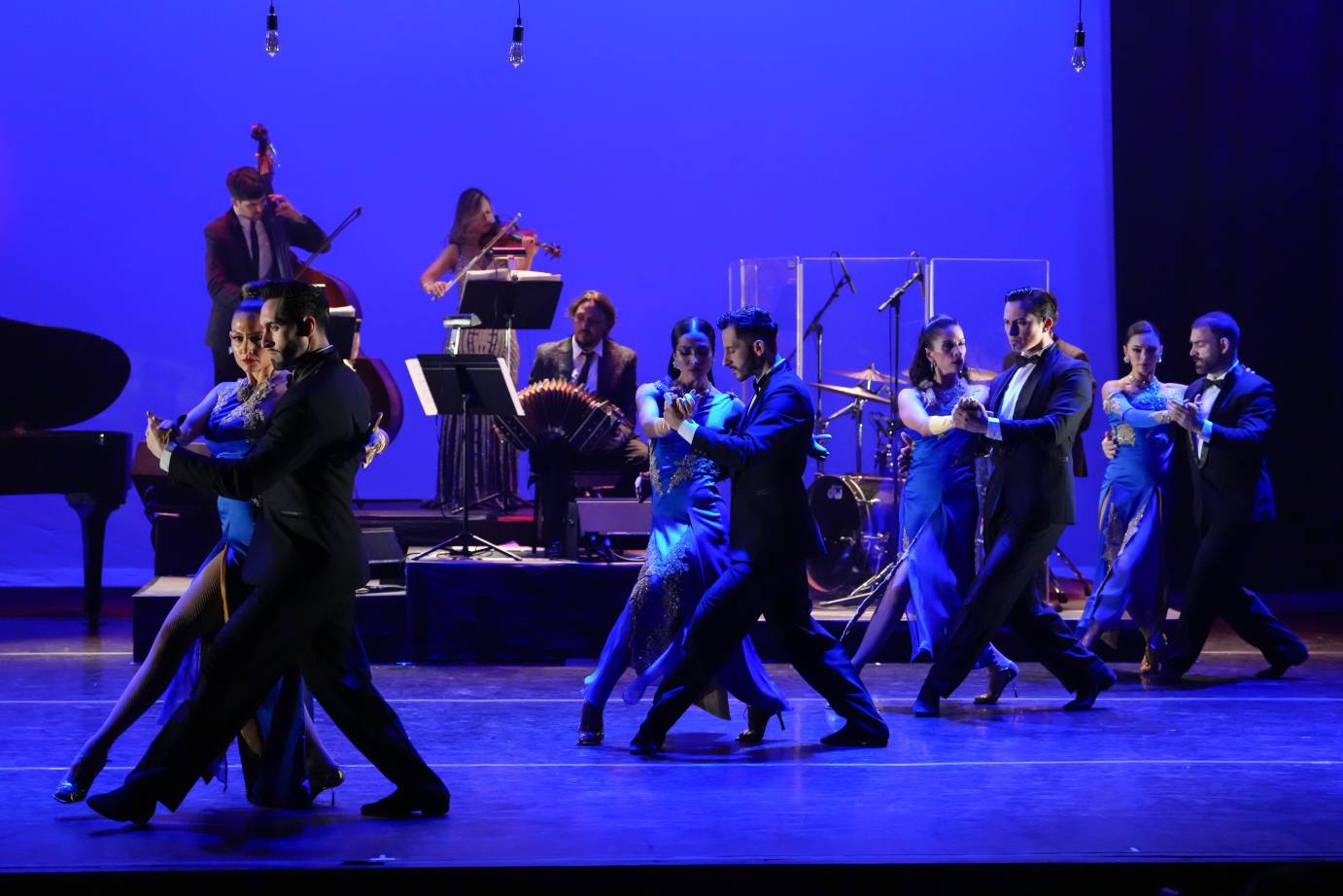
The ten dancers that make up the troupe whirl, and smile, and perform for the audience with such enthusiasm that I grow numb long before the show ends. At two hours plus, Tango After Dark is overlong. Still, what these performers pull off is mind-blowing. Overhead lifts are executed with lightning speed, and intricate twirls around each other prove that highly accomplished individuals put a lot of work into the preparation of this show. Unfortunately, these ingratiating gyrations do not amount to more than high-octane entertainment devoid of emotion and soul in both the first and second half. Even Piazzolla’s music can’t save the night, since it is adapted in a way that suggests cruise-ship entertainment. Tango After Dark comes across as authentically dead, recalling the shows mostly frequented by Swiss tourists in a handful of commercial venues in Buenos Aires.





